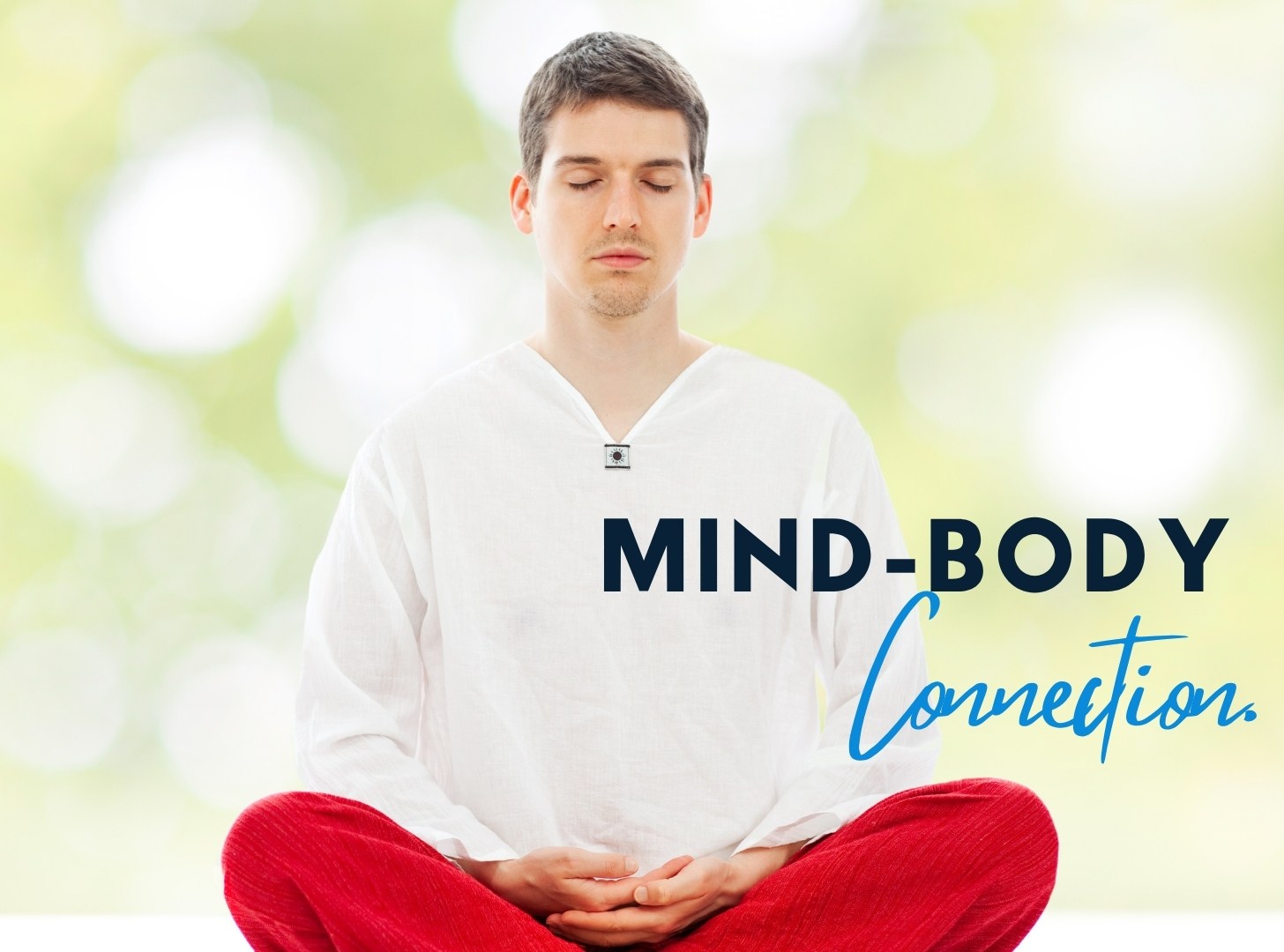
The Mind-Body Connection: How Your Thoughts Affect Your Health
Have you ever noticed how your stomach tightens when you’re anxious, or how a calm walk outdoors instantly lifts your mood? That’s the mind-body connection at work, the constant conversation between what you think and how your body feels.
For centuries, healing traditions have taught that the mind and body are one. But only recently has science confirmed it. Every thought, emotion, and belief sends signals that affect your heart rate, digestion, immune system, and even the way your genes express themselves.
As explained in The Wellness Blueprint, this connection isn’t just an idea; it’s a living feedback loop. When your mind feels stressed, your body reacts. And when your body is tense or tired, it sends those stress signals right back to the mind. The good news? Once you understand this two-way relationship, you can use it to support your health and happiness.
The Science Behind It: How Stress and Emotions Impact Your Body
When you feel worried, angry, or afraid, your brain releases stress hormones like cortisol and adrenaline. These chemicals prepare you to handle danger, but if they stay high for too long, they can lead to headaches, poor sleep, or digestive issues.
The same happens in reverse: when your body feels drained or tense, your mood often dips. Maybe you didn’t sleep well, and suddenly everything feels harder the next day. These cycles can become habits, quietly shaping how you think, move, and feel.
The Wellness Blueprint calls this the “mind-body loop”, a cycle that can pull you down or lift you. The key is noticing it early and learning simple ways to break the negative loop before it spirals.
The Brain-Gut Axis: Your “Second Brain”
You’ve probably heard the phrase “gut feeling.” It’s more than a figure of speech. Scientists now know that your gut and brain are connected by a major nerve called the vagus nerve, forming what’s called the brain-gut axis.
This connection means that what happens in your gut directly affects your mood. In fact, about 95% of the body’s serotonin — the “feel-good” chemical — is made in the gut, not the brain. When your gut microbiome is balanced, you tend to feel calmer and more focused.
To support this system, eat foods rich in probiotics (like yogurt, kefir, and kimchi) and prebiotics (like bananas, garlic, and oats). A healthy gut helps your body manage stress better, keeping both your mood and your digestion in sync.
As The Wellness Blueprint puts it beautifully, “feeding your gut is feeding your peace of mind.”
Signs Your Mind and Body Are Out of Sync
It’s not always easy to tell when your mind and body are disconnected, but there are subtle signs to watch for:
• Constant tension in your shoulders or jaw
• Low energy or unexplained fatigue
• Irritability, anxiety, or racing thoughts
• Upset stomach or frequent headaches
• Trouble sleeping or feeling restless even when you rest
These signals aren’t random; they’re your body’s way of asking for attention and care. Listening to them is the first step toward restoring balance.
Simple Ways to Reconnect Mind and Body
- Breathe with Intention
When life feels overwhelming, pause and breathe deeply. Try the 4-7-8 technique — inhale for four counts, hold for 7, exhale slowly for 8. This simple exercise calms your nervous system and tells your body you’re safe.
Breathing with awareness also helps you reset between tasks, lower your heart rate, and clear your mind. You can do it anywhere — in traffic, at your desk, or before bed. Move Mindfully
Movement doesn’t just build strength — it builds presence. Whether you prefer yoga, stretching, dancing, or a walk in the park, moving with awareness helps release stress and reconnect you to your body.
Focus on how your body feels as you move. Notice your breath, your heartbeat, your muscles. Even five minutes of mindful movement can shift your mood and energy.
- Journal for Clarity and Healing
Writing down your thoughts can do wonders for your wellbeing. Journaling helps you process emotions, notice patterns, and release tension from your mind and body.
Try prompts like:
• “What emotion do I feel right now, and where do I feel it in my body?”
• “What’s one thing my body is asking for today?”
You don’t need perfect sentences — just honesty. Journaling is a quiet act of self-connection and care. Feed the Connection
Your mind and body both depend on nourishment. Eat balanced meals, stay hydrated, and enjoy your food without rushing. Mindful eating — slowing down, savoring flavors, and putting away distractions — helps your body digest better and keeps you grounded in the moment.
- Practice “Name It to Tame It”
When strong emotions hit, pause and name them: “I feel stressed,” “I feel sad,” or “I feel anxious.” This simple act of naming helps calm your brain’s emotional center and activates the logical part that can make sense of what’s happening.
It may seem small, but this awareness helps you respond thoughtfully instead of reacting automatically.
Creating Positive Feedback Loops
Just as stress can spiral downward, positive emotions can build upward. A small mindful act — a morning stretch, a deep breath, or a moment of gratitude — can create what psychologists call an upward spiral of wellbeing.
Each positive action strengthens the next, helping you feel more balanced, energized, and at peace. Over time, these little moments of awareness become your natural rhythm of wellness.
When to Seek Extra Support
Sometimes, reconnecting with your body takes more than self-care. If you’re experiencing ongoing fatigue, anxiety, or physical discomfort, reaching out for help is a powerful step — not a weakness. Therapists, mindfulness teachers, and holistic health practitioners can help you explore your mind-body connection more deeply and safely.
Final Takeaway
Your body listens to your thoughts — and your thoughts respond to your body. Every breath, every meal, every quiet moment of awareness is a chance to strengthen that connection.
You don’t need to change everything overnight. Just start by noticing: how do you feel, right now, in your body? From that awareness, healing begins.
Remember the wisdom of The Wellness Blueprint: wellness isn’t a destination, it’s a daily conversation between your mind and your body. Listen closely — your body is always speaking, and it’s ready to help you heal.
Be the First to Know
Sign up for exclusive sneak peeks, ARC opportunities, reader discounts, and behind-the-scenes updates on upcoming releases.

